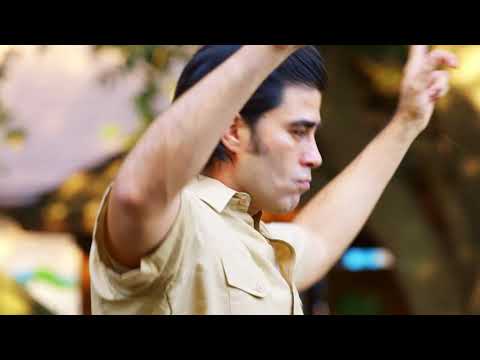- Celebrating a Milestone: 50 Years of Excellence at Gladys Porter Zoo
- Key Contributions to Wildlife Conservation and Research Initiatives
- Innovative Zoo Management and Educational Outreach Efforts
- Signature Species and Conservation Success Stories
- Community Engagement and Future Prospects for the Zoo
Fifty years ago, on October 1971, the landscape of zoological conservation and education was forever altered with the opening of the Gladys Porter Zoo. Located in Brownsville, Texas, this zoo stands as a model of excellence in the fields of wildlife preservation, education, and scientific research. As the zoo commemorates its half-century mark, it is important to reflect on its remarkable journey, achievements, and contributions to wildlife conservation worldwide.
Gladys Porter Zoo was founded by Earl C. Sams, former president of JCPenney, and named after his daughter. Its philosophy and mission have been grounded in providing a sanctuary for endangered species, promoting scientific research, and educating the public. Throughout its history, the organization has been successful in disseminating awareness and sparking interest in wildlife conservation among countless visitors. This incredible journey of achievement is a testament to the power of vision and passion in the conservation of our natural world.
The zoo has played a critical role in wildlife conservation. It participates in over 50 Species Survival Plans (SSPs). These cooperative breeding programs are essential to ensure genetic diversity and sustainability of endangered species populations. Among its many successes, the zoo boasts of successful breeding programs of various critically endangered species such as the Philippine crocodile and the Western lowland gorilla. These efforts highlight the crucial role zoos play as a modern-day Ark for threatened species, making Gladys Porter Zoo a leader in the movement.
Research is another cornerstone of the zoo’s mission. Gladys Porter Zoo collaborates extensively with conservation organizations and academic institutions around the globe. This enhances understanding of animal behavior, genetics, and health, which are crucial for advancing wildlife preservation methodologies. The zoo’s research initiatives have led to significant discoveries, particularly in veterinary medicine. These scientific endeavors are not just about conservation, but they also enrich the global knowledge base, helping other institutions implement effective strategies.
Gladys Porter Zoo is noteworthy for its pioneering work in zoo management as well. They have embraced innovations in animal husbandry, exhibit design, and sustainable practices. By continuously evolving to meet modern ecological and ethical standards, the zoo has established itself as a forward-thinking institution. Visitor engagement is achieved through state-of-the-art exhibits that mimic natural habitats. Interactive programs facilitate a deeper connection between people and wildlife, fostering a sense of responsibility towards nature.
Education is at the heart of the zoo’s outreach efforts. Educational programs target a diverse audience, from schoolchildren to adults. Through workshops, internships, and volunteer opportunities, these programs encourage participants to engage deeply with the conservation challenges facing the planet. They aim to cultivate a generation of environmentally conscious individuals prepared to take meaningful action. Furthermore, the zoo adopts digital tools to expand its educational impact beyond its physical boundaries, reaching a global audience.
The zoo’s diverse collection includes over 1,500 animals representing 400 species. Among them, signature species such as the Komodo dragon, cheetah, and okapi are highlights for many visitors. The presence of these animals not only captivates audiences but also serves educational and conservation purposes. Through story-telling and live exhibits, the animals become ambassadors for their wild counterparts, emphasizing the threat of habitat loss and the importance of protective measures.
Community involvement has always been vital to the zoo’s ethos. Local initiatives focus on conservation education, citizen science projects, and ecological restoration efforts. By fostering strong community ties, the zoo reinforces its role as a vital resource and rallying point for regional conservation efforts. Annual events, member programs, and conservancy volunteering opportunities help integrate the community, ensuring a solid partnership in advancing the goals of wildlife preservation.
Looking ahead, the future of Gladys Porter Zoo appears bright with plans to further expand its conservation and educational programs. Upcoming projects include new exhibit designs focusing on endemic species and climate change education. The zoo aims to leverage technology further to track animal health and improve sustainable practices. By continuing to align with global conservation priorities, the zoo promises to remain at the forefront of zoological science and environmental stewardship.
Gladys Porter Zoo Celebrates 50 Years! This milestone is not only a reflection of its remarkable past but also a beacon of hope for future conservation efforts. It stands as a testament to the critical role that modern zoos play in educating the public, preserving biodiversity, and advancing scientific research. As the zoo moves forward, its commitment to these principles will undoubtedly inspire generations to come, fostering a global community united in the cause of protecting our planet’s precious wildlife.
*****
Source Description
🎉Today marks 50 years of the Gladys Porter Zoo! 🎉
Come celebrate with 1971 admission prices on select weekends. Find your weekend at gpz.org.


